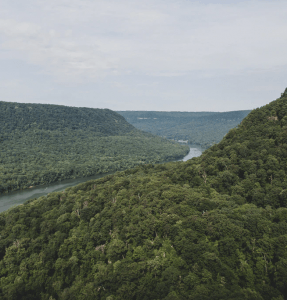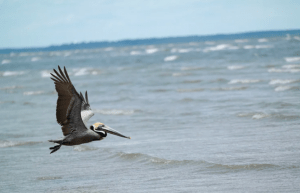The United Brands of America: How State Brands Are Built
Published on February 13, 2020, at 6:20 p.m.
by Charlotte Arnold.
Think of your home state. Do you imagine green, rolling hills? Maybe you think of city lights or sandy beaches. Whether it’s Sweet Home Alabama or Pure Michigan, each state elicits a different image in your mind: its brand. Each state has a unique story to tell. Its brand helps tell that story.
State brands come to mind so easily that they may seem effortless. The reality is that behind every state’s brand is a team of people who use a mix of owned, earned and paid media to build and maintain it. They use data from research to strategize brand recognition and data to evaluate success.
State brands are built and maintained by each state’s tourism department. The goal of state tourism is to get people to travel to that state, which in turn, brings in money to the state.

Nekasha Pratt, director of marketing for the Tennessee Department of Tourist Development, said that marketing a state is similar to marketing a product. She said that the marketing process is the same, but the tactics may vary. For example, a product is usually marketed toward a specific public, whereas a state wants to appeal to multiple publics.
State branding poses a unique set of challenges. How do you appeal to everyone? How do you capture the essence of an entire state into one brand?
According to Explore Georgia Director of Brand Strategy Meggan Hood, preparing for tourism initiatives “all start with data.” They look at consumer and industry research, as well as talk to stakeholders, state partners, and lodging and attraction management to gauge what is most appealing to consumers.
Through data analysis, Georgia has found that it needs to take its brand in a new direction to best appeal to consumers. Hood is leading the rebranding team. The rebrand includes a new logo and collateral messaging. It is “important that we represent everything that Georgia is to everybody,” said Hood.
Earned media is one of the most important components of getting brand recognition. Lindsey Norment, brand director for Virginia Tourism Co., expressed the importance of earned media as “a gift.” She said that the Virginia Tourism Co. reaches out to travel writers, influencers, bloggers and freelance writers. Norment said that her team was excited last month when Richmond was included in The New York Times’ “52 Places to Go in 2020.”
States use paid media to promote their seasonal campaigns. Most of state advertising is done for spring and summer travel planning. Norment said that advertising is the best way to reach unaware publics. She added that the goal of paid media is to get the state’s audiences to eventually interact with its owned media.
States use websites and various forms of social media to market themselves. Nowadays, it is essential for states to have a social media presence. The content on social media should be engaging and controlled to craft the state’s intended image.

For example, South Carolina, which is known primarily for its coastal region, uses Instagram, Facebook and social media influencers to promote some of its lesser known attractions. In addition to its beaches, South Carolina’s social media highlights golf courses, food, outdoor adventures and history. South Carolina Department of Parks, Recreation & Tourism Advertising Manager Tammy Strawbridge said that social media marketing is an important component of the state’s overall branding strategy. It prompts potential visitors to look for additional information on the state’s tourism website.
Pratt said that to reach Tennessee’s consumers, they may have to use media options that you may not expect. For example, because many people use Pinterest for travel inspiration, Tennessee has a Pinterest page.
A state’s website is the most important form of owned media. It is often the first place people go to seek travel information. State tourism websites are full of articles about places to go, food to eat and things to see. Some websites even have travel booking capabilities.
State branding effectiveness is measured similarly to any other public relations/marketing effort: with data. Hood said that Georgia looks at total visitation, total visitor spending, total local and state tax revenues, and how many jobs were directly and indirectly supported.

Pratt explained that it can be difficult to measure exactly how many people travel to a state as a direct result of tourism department’s efforts, because individual cities and attractions within the state also market themselves. However, there are indicators of success that they do track, such as website traffic, video views and social media engagement.
Operating in the bureaucratic arena is another challenge of state branding. State tourism offices are usually government funded, so its budget must be approved and allocated by state legislature. This can be difficult for state tourism offices, because marketing budget dollars can fluctuate from year to year.
States building their own brand may seem frivolous, but state tourism departments yield powerful results. For example, in 2018, the ROI of the Tennessee Department of Tourist Development brand marketing was 19 to 1.
A state having a unique brand is important, because it unites and inspires pride amongst state residents. It has the power to bring people together, whether they are fellow state residents or two people from opposite coasts. State brands are not built to emphasize our differences. They are built to show that we all have something unique to share with the world and a story to tell.




